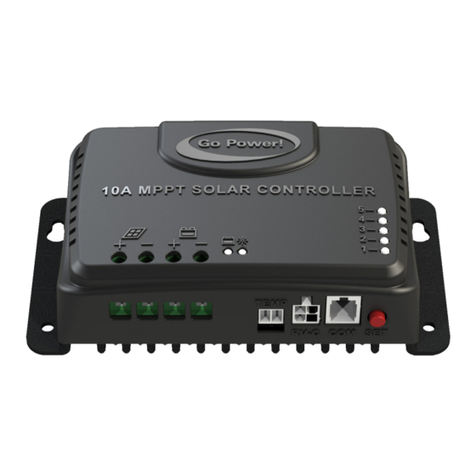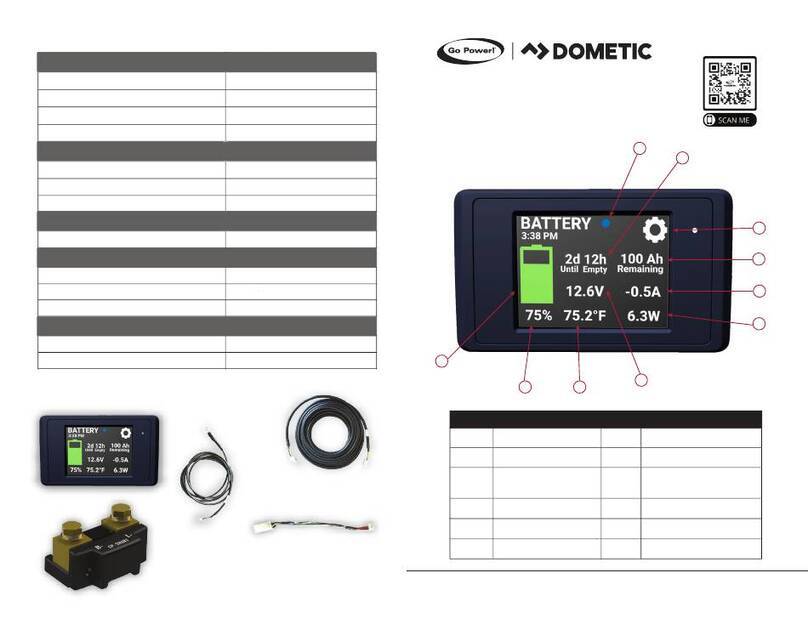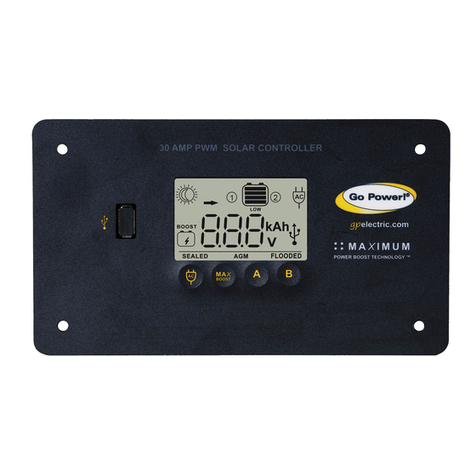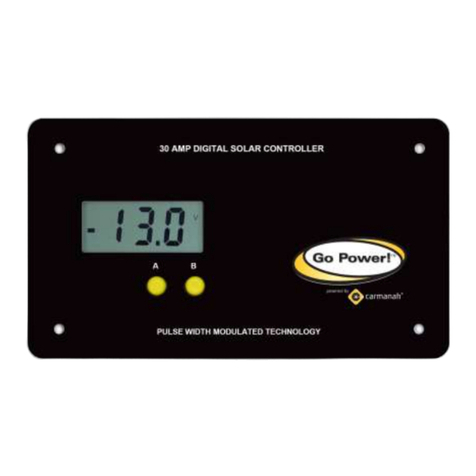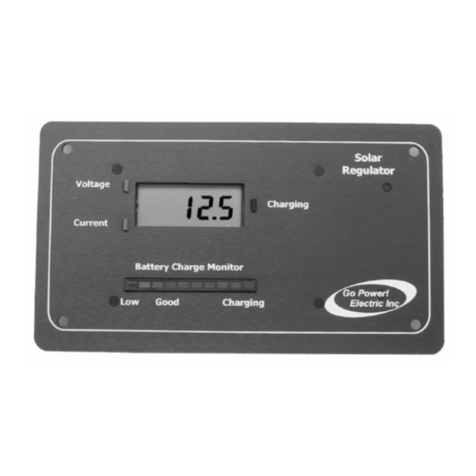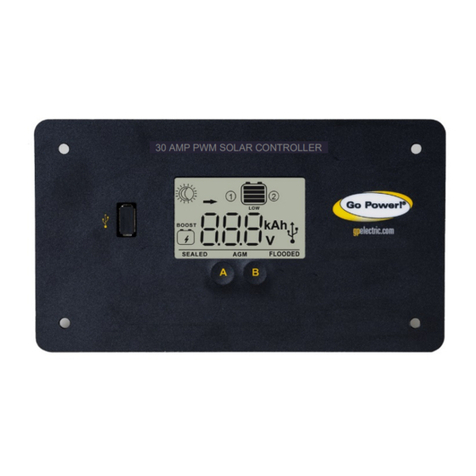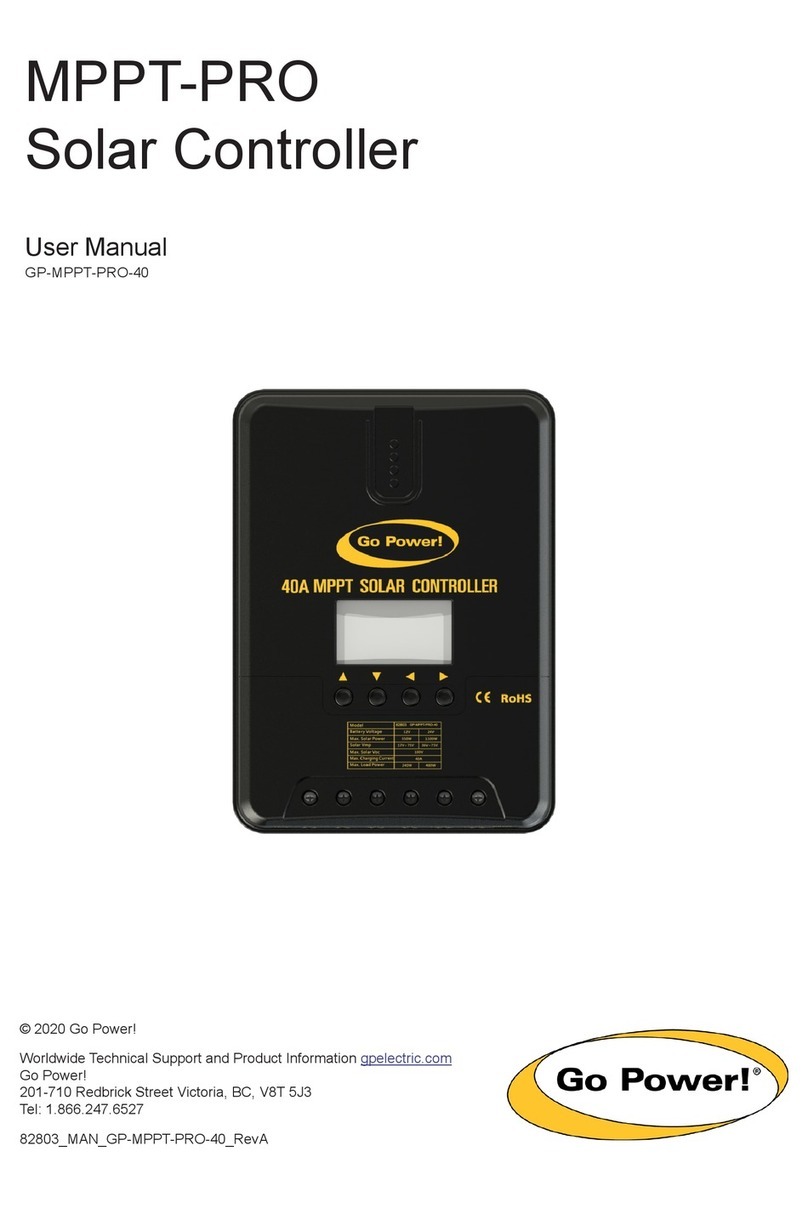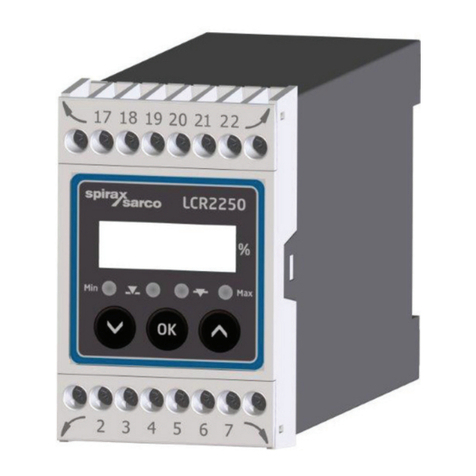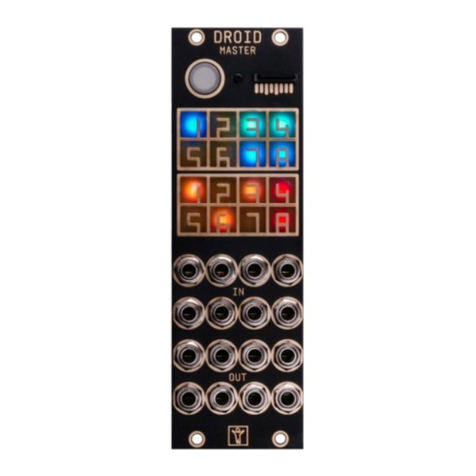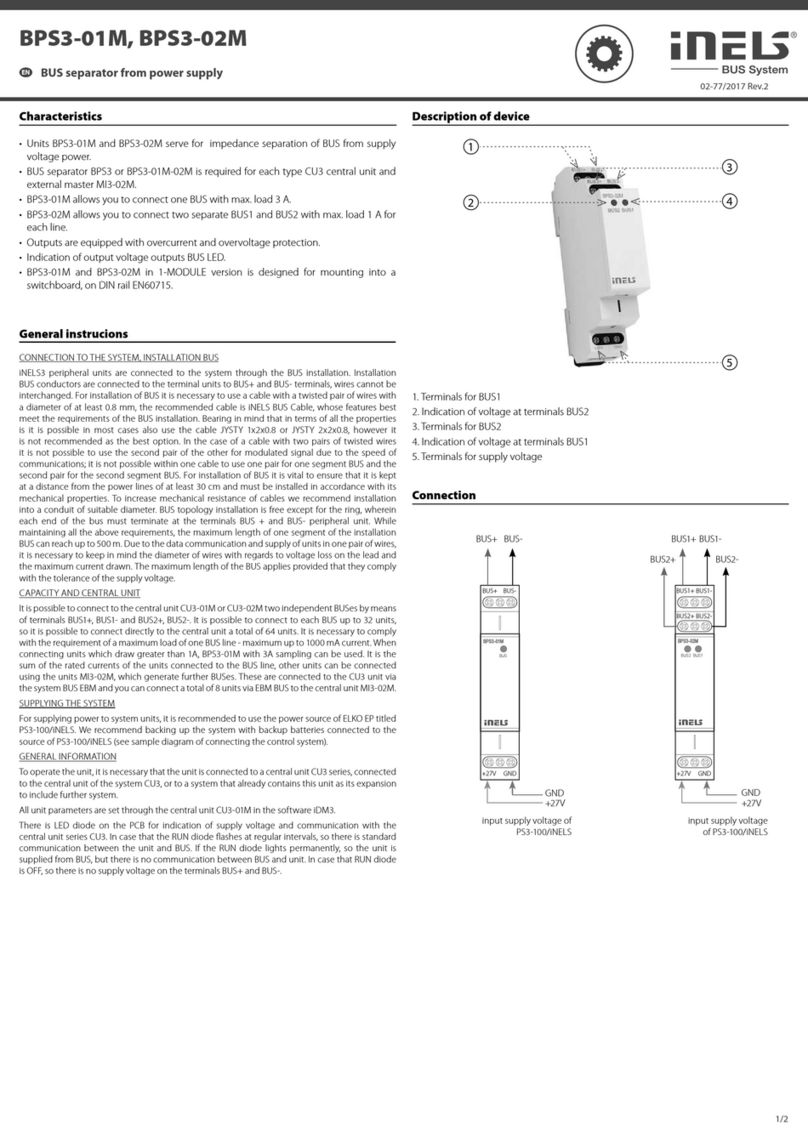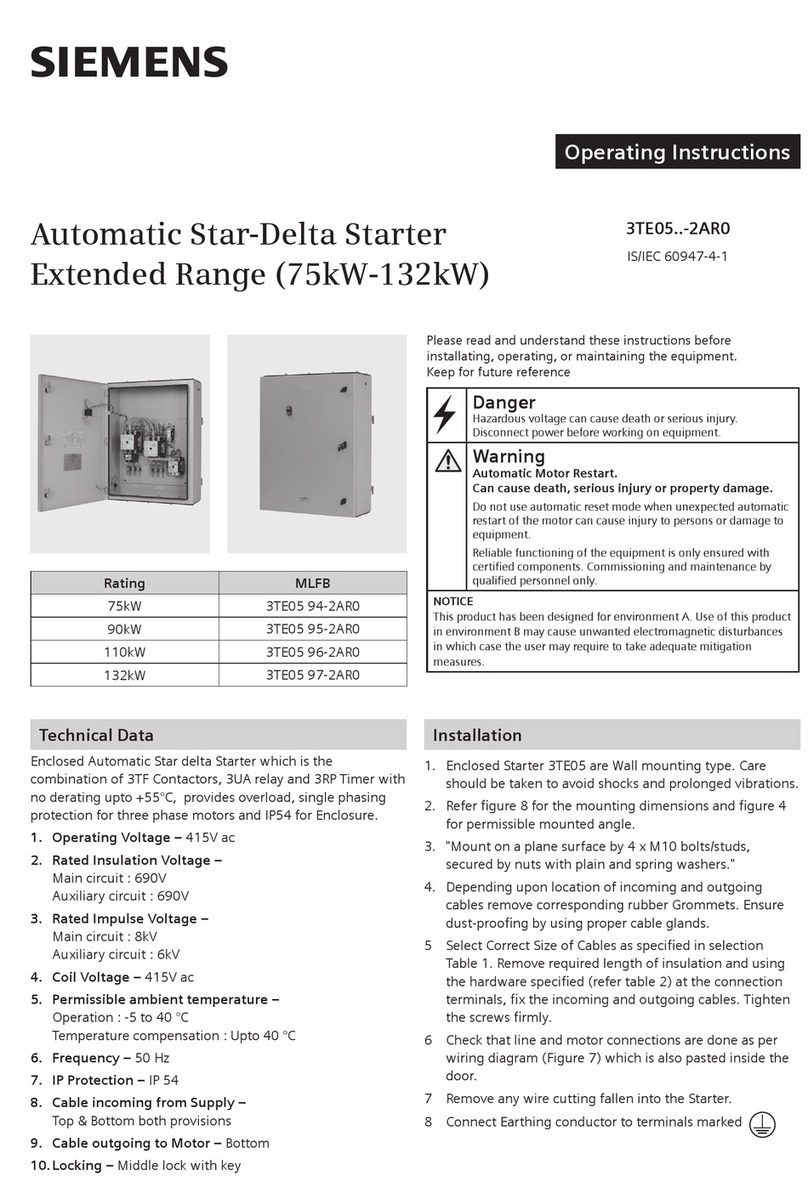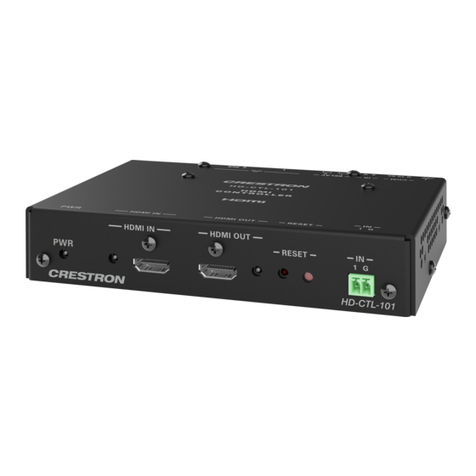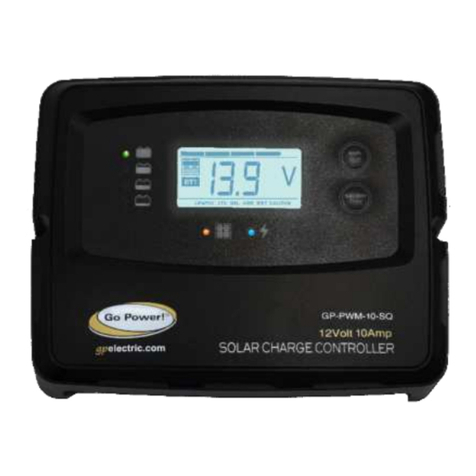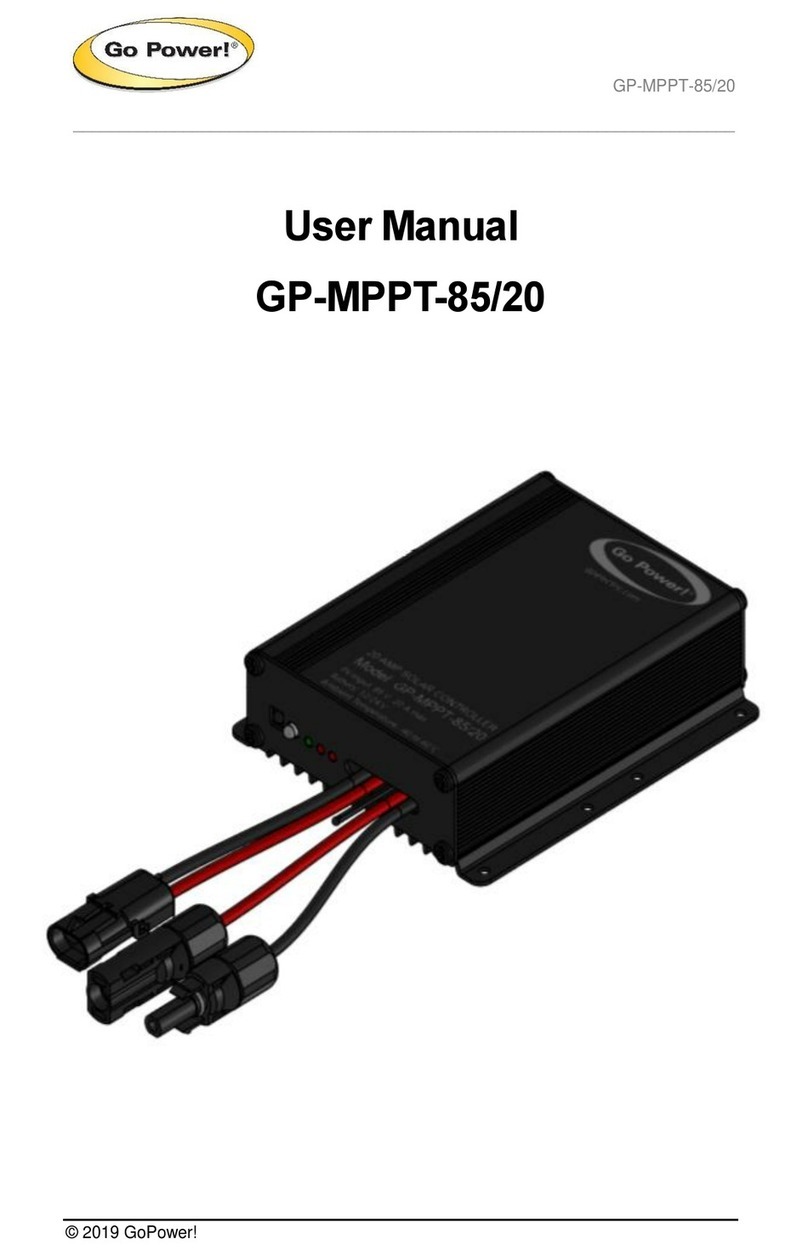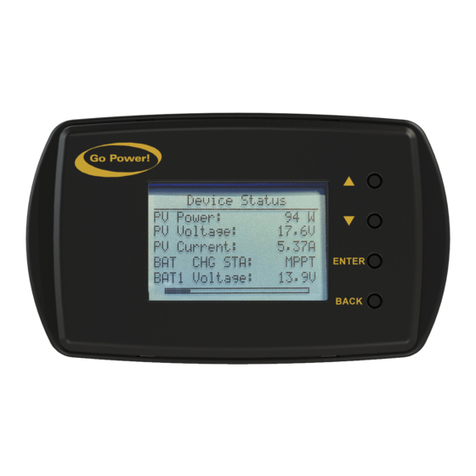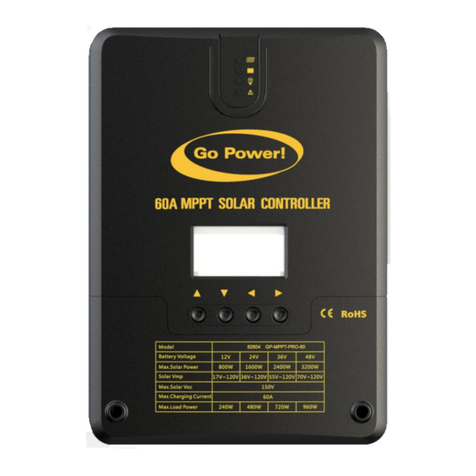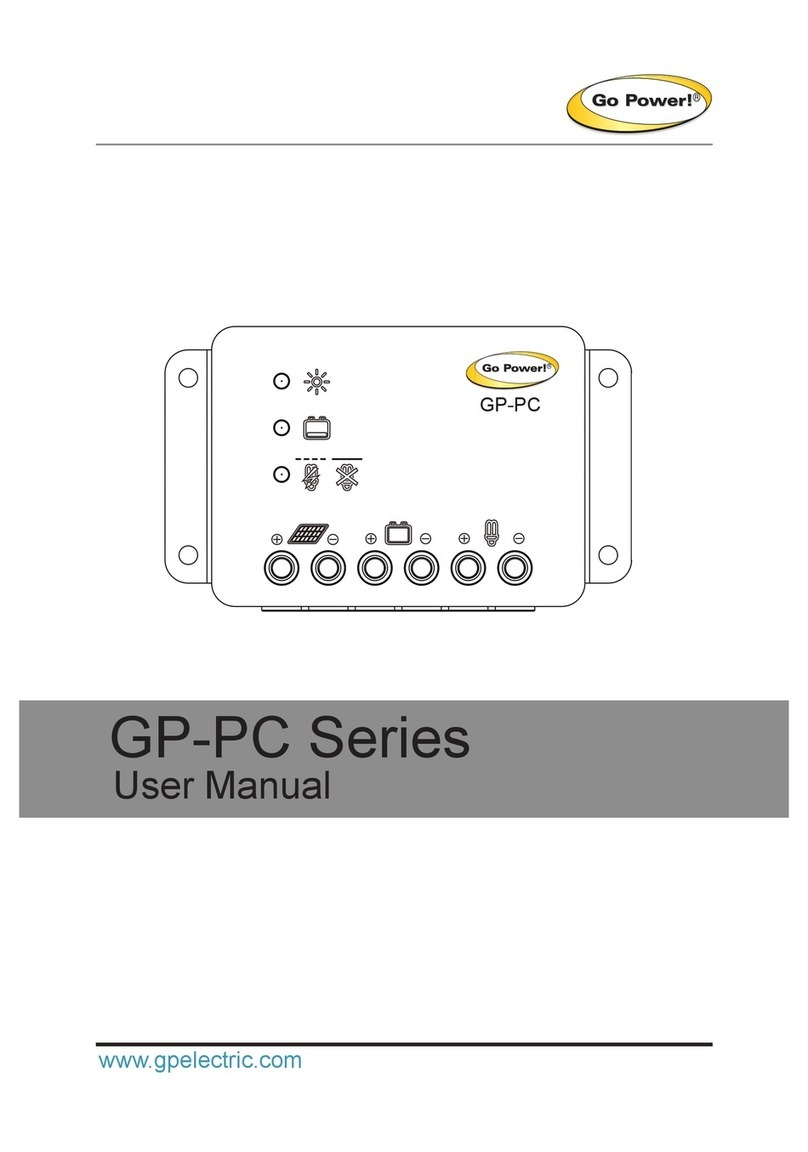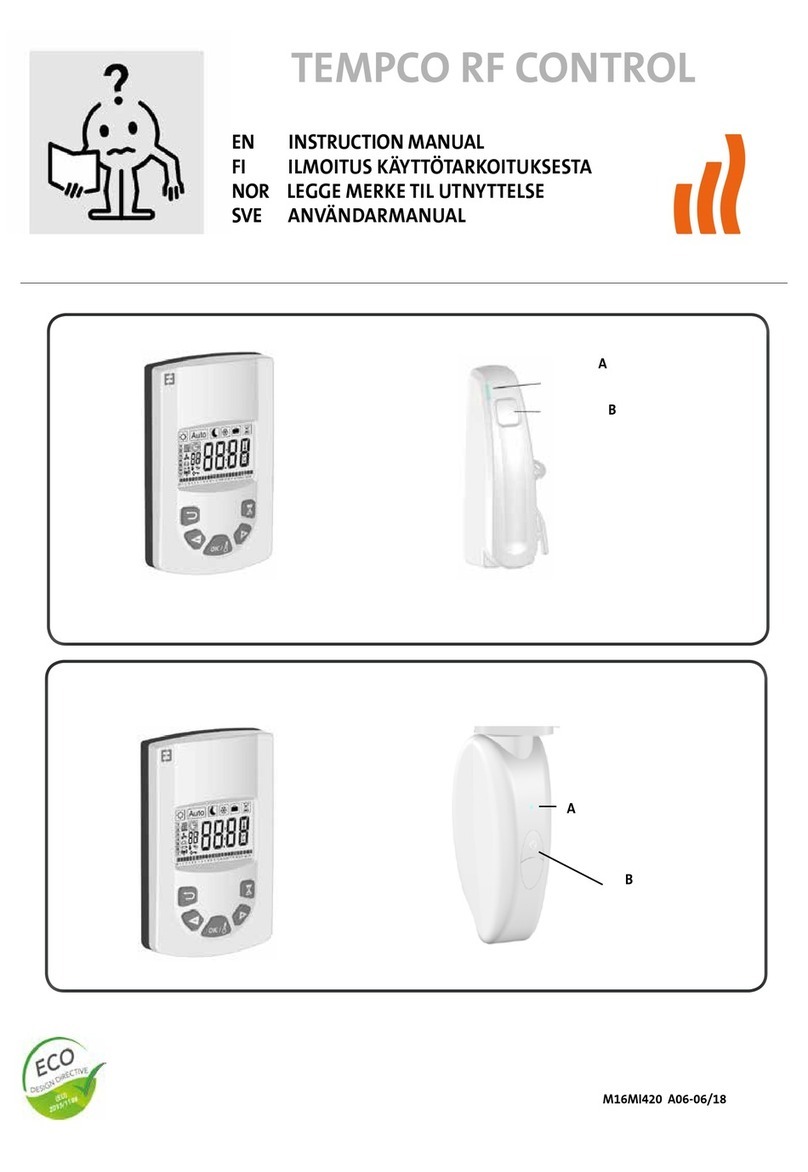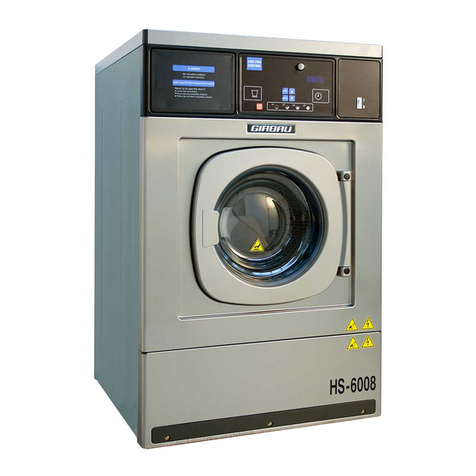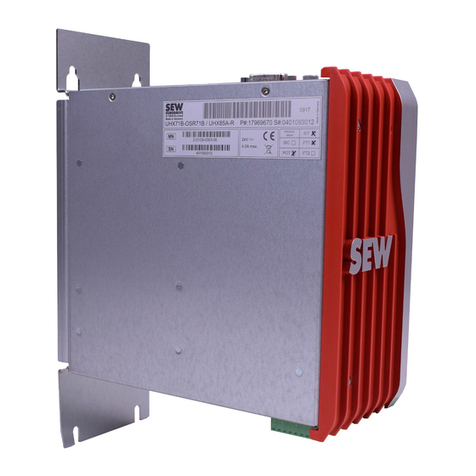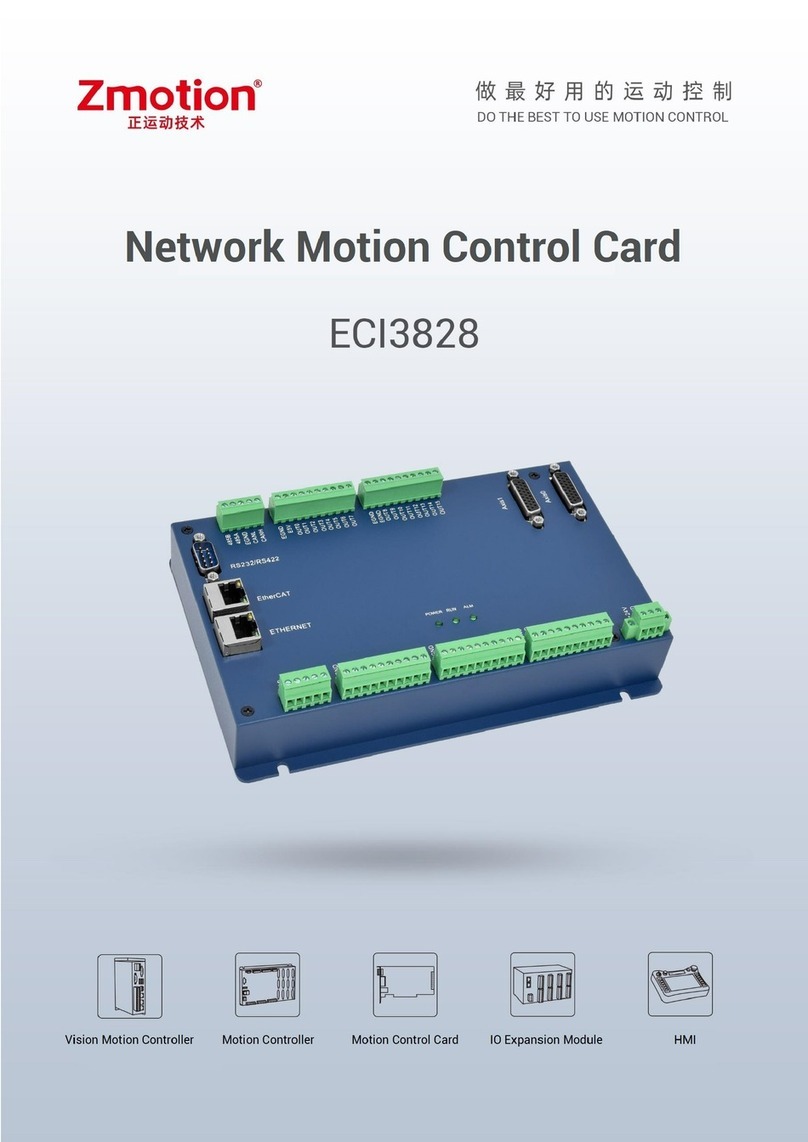
GP-PWM-10-FM
9
© 2018 Go Power!
5.0 Installation Instructions
1. Prepare for mounting. Use the template provided on page 27
to mark the four mounting holes and the cutting line for flush
mounting your controller.
2. Complete the installation of the solar modules. If this
GP-PWM-10-FM was purchased as part of a Go Power! Solar
Power Kit, follow the Installation Guide provided. Otherwise,
follow manufacturer’s instructions for solar module mounting and
wiring.
Do not exceed
the GP-PWM-
10-FM Max
current ratings
The maximum current of the solar system is
the sum of parallel-connected PV module–
rated short circuit Currents (Isc) multiplied by
1.25. The resulting system current is not to
exceed 37.5A. If your solar system exceeds
this value, contact your dealer for a suitable
Do not exceed
the GP-PWM-
10-FM Max
voltage ratings
The maximum voltage of the array is the sum
of the PV module–rated open-circuit voltage of
the series connected modules multiplied by
1.25 (or by a value from NEC 690.7 provided
in Table 690.7 A). The resulting voltage is not
to exceed 35V. If your solar system exceeds
this value, contact your dealer for a suitable
Ne dépassez
pas le courant
nominal
maximum du
GP-PWM-10-FM
Le courant maximum du système solaire est la
somme des courants de court-circuit (Isc) des
modules PV connectés en parallèle, multipliée
par 1,25. Le courant du système qui en résulte
ne doit pas excéder 12,5 A. Si votre système
solaire dépasse cette valeur, veuillez contacter
votre revendeur pour obtenir un régulateur plus
Ne dépassez
pas la tension
nominale
maximum du
GP-PWM-10-FM
La tension maximum des panneaux est la
somme de la tension à vide du module PV des
modules connectés en série, multipliée par
1,25 (ou par une valeur de l’article 690.7 du
Code National Électrique fournie dans le
tableau 690.7 A). La tension qui en résulte ne
doit pas excéder 35 V. Si votre système solaire
dépasse cette valeur, veuillez contacter votre
revendeur pour obtenir un régulateur plus




















